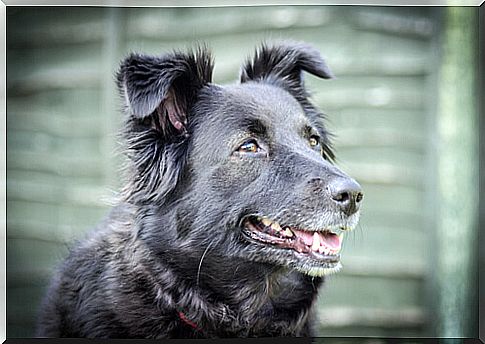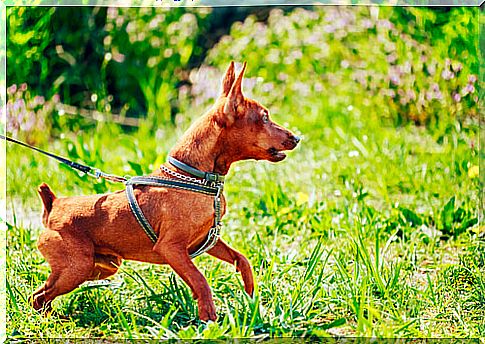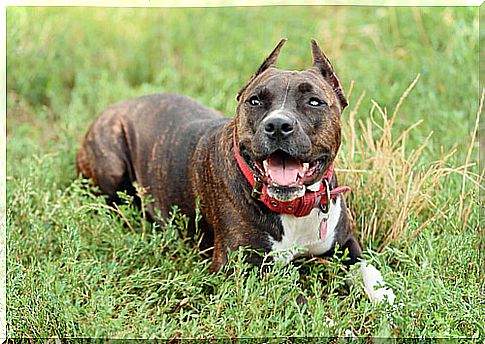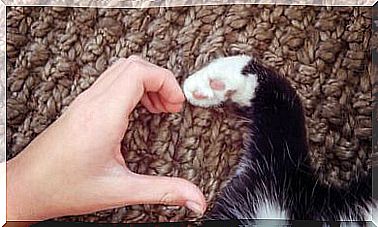How To Calm An Angry Dog?

The temperament of dogs varies according to their personality, as there are some dogs that are more likely to be aggressive than others. How to calm an angry dog? In these cases, there are several techniques applicable to calm an angry dog.
Although it must be said that, although genetics accompany the bad mood of dogs, the behavior of their master also influences this behavior. Dogs with an aggressive tendency require an owner who shows greater power and respect ; that is, a dominant figure who can handle the situation.
In the way in which a dog by nature aggressive is treated, this behavior will be reinforced or diminished. If the animal is mistreated or its education is very rigid, its aggressive behavior may continue, while if it is treated with affection and respect, its temperament is likely to soften.
Tips to calm an angry dog
- Keep calm. The first thing to calm an angry dog is to remain calm, because if the animal perceives anguish, stress or fear in the person, its behavior will be accentuated.
When the owner is the one who tries to calm the dog, he should speak calmly and slowly. His body posture should not lose control of the situation and it is important to let the dog know that, despite his encouragement, the owner is the one who continues to command.

- Do not show a challenging or threatening posture. When dogs are angry they may jump or go back and forth erratically.
Trying to chase or grab him can make the situation worse, so it is most beneficial to stay in the same place. In the event that moving is required, the steps should be slow and smooth.
Also, it is not advisable to stand in front of the dog or stare at it. The animal will consider both positions as a threat and, when it is a foreign dog, it is best to move away little by little. You should not run because this can scare the dog and cause it to attack.
Clarity and positive reinforcement
- Give clear orders. To calm an angry dog, the commands given must be clear and consistent.
It should be noted that a common mistake of the owners is that they begin to give several orders at the same time: “Calm, silence, lie down, quiet”. All these commands at the same time increase the anxiety of the animal.
Give a clear command and stand firm with it, such as calling the dog by name, as it can get their attention. For example: “Bobby, shut up.” And repeat the order until the dog fulfills it.
- Do not reprimand. Once the angry situation has passed, the animal should not be reprimanded; on the contrary, you have to try to understand what caused the situation. Thus, on the subject of training our dogs we have to understand that positive reinforcement is always preferable.
If the aggressiveness is the product of the presence of another dog, it may be a conflict of powers. So both dogs are trying to figure out who’s dominating the territory.
That is why, in this case , when reprimanding the dog, it will not know how it should behave before other animals and in similar situations.
How to control aggressiveness in a dog
Aggression has a high genetic load in the personality of dogs, since there are breeds that are by nature bravado and impulsive. Such is the case with Rottweilers , Dobermans, and the German Shepherd. However, there are some considerations that can be followed to smooth out the character:
- Maintain a routine. For all dogs, routines are important.
In the case of aggressive dogs, the routine sets limits and permissions for them, and through it they develop self-control.

- Show who’s boss. The dog with behavior problems needs to know who is the master.
This type of animal requires clear and consistent guidelines, so body language must be coordinated with the directions given.
In this sense, establishing a relationship based on trust helps to soften the character in dogs. And it is that generating an owner-dog empathy makes these latter animals more confident and less insecure.
- Exercise daily. Strong-willed dogs tend to have a lot of energy, so they need to exercise regularly.
Thus, we can opt for long walks or runs in the park, but the important thing is that a daily activity is carried out on a regular basis.
- Check the feeding. Both starving and overeating can generate a bad mood in dogs, so it is advisable to take care of the amount and type of food they consume.
Keeping track of your behavior and cues helps assess patterns of behavior and behavior.









